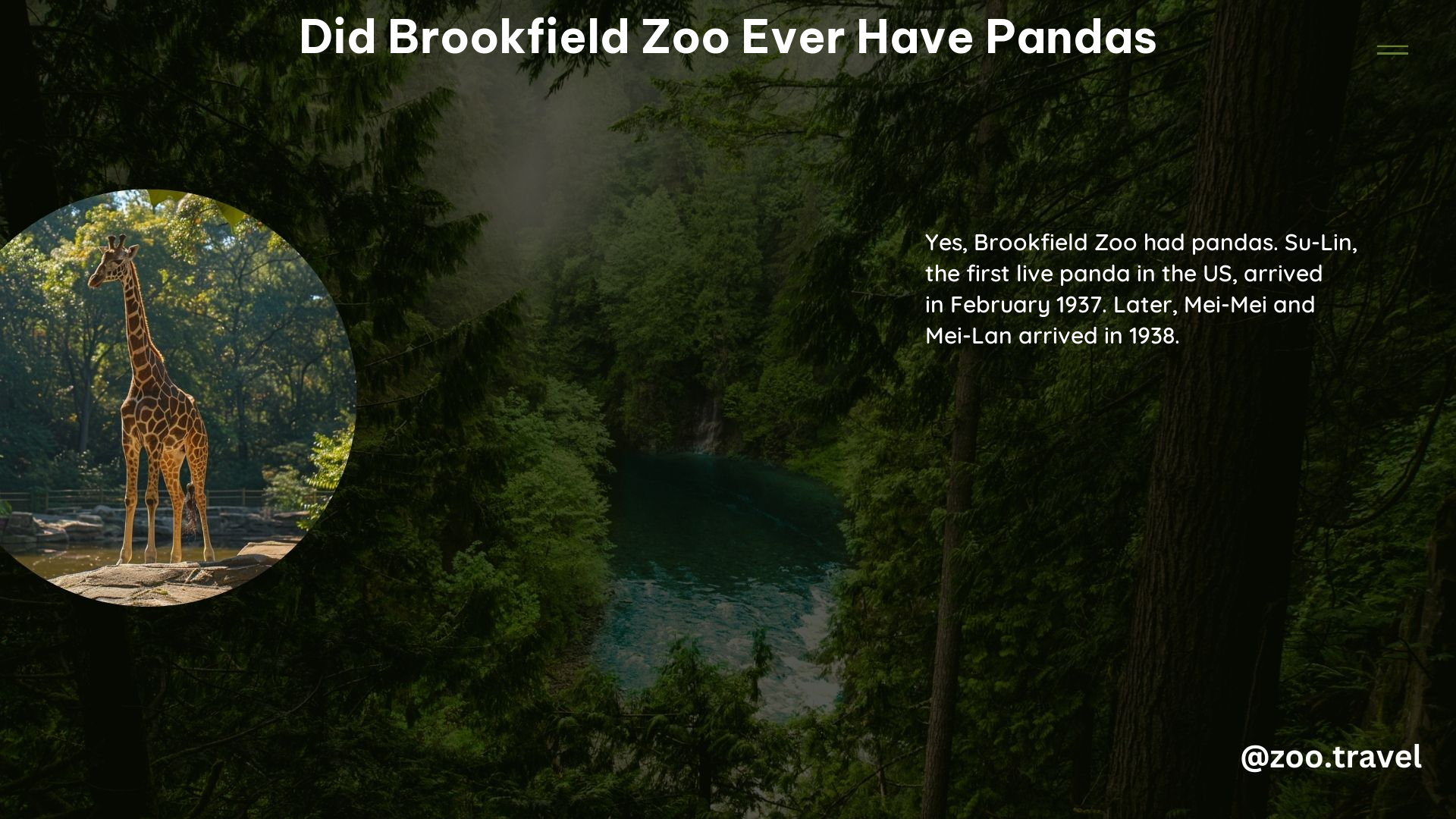Yes, Brookfield Zoo did have pandas. The first live panda in the United States, named Su-Lin, arrived at Brookfield Zoo in February 1937. Su-Lin was brought to the zoo by Ruth Harkness, an American explorer and adventurer, who had captured the panda in China. The panda quickly became a sensation, attracting tens of thousands of visitors in the first few days and over 325,000 visitors in the first three months.
The Arrival of Pandas at Brookfield Zoo
In 1938, Harkness returned to China and brought back another panda, named Mei-Mei, which was initially thought to be a female but later discovered to be a male. The two pandas, Su-Lin and Mei-Mei, were housed together at Brookfield Zoo, although they did not get along well, with Su-Lin hitting Mei-Mei on the nose during their first encounter.
Brookfield Zoo continued to host pandas for some time, with Mei-Mei and Mei-Lan arriving at the zoo in 1938. However, the zoo no longer has pandas in its collection.
The Popularity of Pandas at Brookfield Zoo

The arrival of the pandas at Brookfield Zoo was a major event, attracting huge crowds of visitors. In the first few days, tens of thousands of people came to see the pandas, and in the first three months, the zoo had over 325,000 visitors.
The pandas were a huge draw for the zoo, and their popularity was a testament to the public’s fascination with these unique and charismatic animals. Pandas were relatively unknown in the United States at the time, and their arrival at Brookfield Zoo was a significant event in the history of the zoo and the city of Chicago.
The Challenges of Caring for Pandas at Brookfield Zoo
Caring for pandas was a significant challenge for the staff at Brookfield Zoo. Pandas are notoriously difficult to care for, with specific dietary and environmental requirements. The zoo had to work hard to ensure that the pandas were well-fed and comfortable in their enclosures.
One of the challenges was the pandas’ diet. Pandas are primarily herbivores, and their diet consists mainly of bamboo. The zoo had to source large quantities of bamboo to feed the pandas, which was not always easy to come by.
Another challenge was the pandas’ sensitivity to their environment. Pandas are native to the mountainous regions of China, and they require a specific temperature and humidity range to thrive. The zoo had to carefully control the temperature and humidity in the pandas’ enclosures to ensure their well-being.
The Legacy of Pandas at Brookfield Zoo
Despite the challenges of caring for pandas, Brookfield Zoo’s experience with these animals has left a lasting legacy. The pandas’ arrival at the zoo was a significant event that captured the public’s imagination and helped to raise awareness of these unique animals.
The zoo’s success in caring for the pandas also helped to establish it as a leader in the field of animal conservation and research. The zoo’s work with the pandas contributed to a better understanding of the species and helped to inform conservation efforts in China and around the world.
Today, Brookfield Zoo is no longer home to pandas, but the legacy of these animals lives on. The zoo’s experience with pandas has helped to shape its mission and its commitment to animal conservation and research, and it continues to be a leader in the field of zoo management and animal care.
Conclusion
In conclusion, Brookfield Zoo did have pandas, and their arrival at the zoo was a significant event that captured the public’s imagination and helped to raise awareness of these unique animals. While caring for pandas was a significant challenge, the zoo’s experience with these animals has left a lasting legacy that continues to shape its mission and its commitment to animal conservation and research.
Reference:
– Brookfield Zoo’s History with Pandas
– The Story of Su-Lin, the First Panda in the U.S.
– Pandas at Brookfield Zoo: A Lasting Legacy
